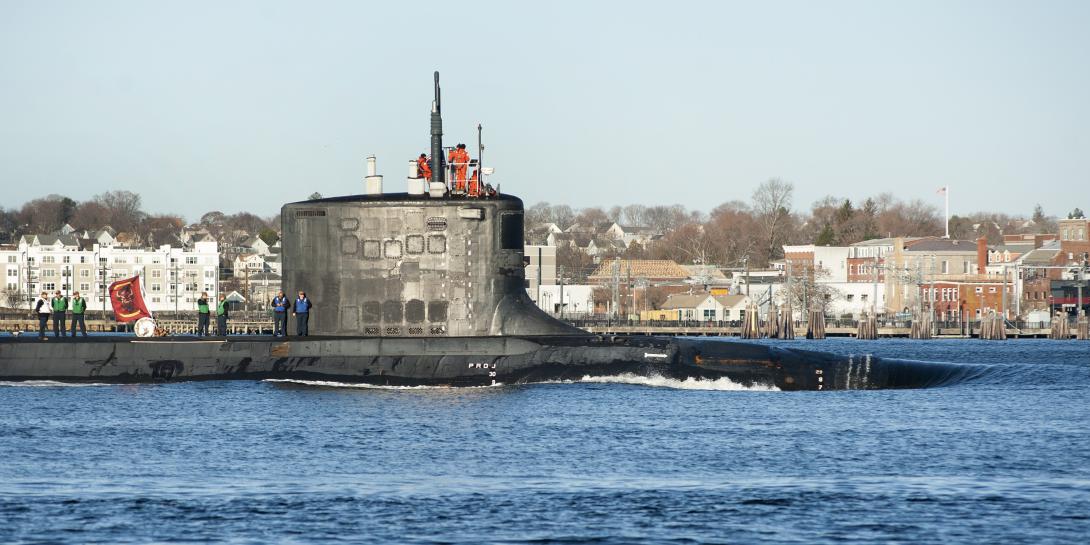Naval Intelligence Does a Deep Dive on Capabilities
The Office of Naval Intelligence (ONI) is listening carefully to operations underwater as it prepares for the Navy to meet new and emerging threats. This work includes probing new adversarial technologies as well as working with partners in industry and overseas to improve U.S. capabilities.
Andrew G. Richardson, deputy commander, Office of Naval Intelligence, gave an unclassified snapshot of the ONI’s efforts in a breakout session of West 2021, a virtual conference cosponsored by AFCEA International and USNI streaming live June 29-30. Richardson described many of the ONI’s activities, but he gave particular emphasis to undersea warfare as an ONI focus.
“Intelligence support to undersea warfare is perhaps our most important mission,” Richardson declared. “The ONI has a unique role to play in the undersea warfare domain, collecting and analyzing data from increasingly sophisticated manned and unmanned adversary platforms.”
Intelligence support to undersea warfare is perhaps our most important mission.—Andrew G. Richardson, deputy commander, Office of Naval Intelligence #WEST2021
— Bob Ackerman (@rkackerman) June 29, 2021
Richardson emphasized that the ONI is working across boundaries to exploit new technologies. “As the nation’s acoustic intelligence center of excellence, we are modernizing our operations and fully embracing automation to the greatest extent possible,” he said.
As the nation’s acoustic intelligence center of excellence, we are modernizing our operations and fully embracing automation to the greatest extent possible.— Andrew G. Richardson, deputy commander, Office of Naval Intelligence #WEST2021
— Bob Ackerman (@rkackerman) June 29, 2021
At the heart of this effort is cooperation with other organizations, including overseas allies. “Naval intelligence has more formal intelligence sharing relationships with our foreign partners than any other military intelligence service,” he claimed. “We are working to come up with very innovative collection opportunities and strategies with our allies across the globe. They are really impactful things we are going to be doing.”
We are working to come up with very innovative collection opportunities and strategies with our allies across the globe. They are really impactful things we are going to be doing.—Andrew G. Richardson, deputy commander, Office of Naval Intelligence #WEST2021
— Bob Ackerman (@rkackerman) June 29, 2021
The ONI has deepened its reach within the Navy. “We have expanded our liaisons,” he reported. “We now have liaisons at all fleet locations, except for the Fourth Fleet.”
But industry remains among the ONI’s more significant partners. Richardson described how the office now holds conferences at submarine builders, where it brings in contractors, subcontractors, government agencies and university research centers to exchange information at higher classification levels than previously undertaken. The goal is to give submarine builders and their technology developers some of the same knowledge possessed by the ONI so they can build better submarines for the U.S. Navy. He notes that the COVID pandemic turned the past two conferences into virtual meetings, but their goals were accomplished.
“In the context of strategic competition, the increased outreach and integration and partnership we have to do with a variety of partners is going up across the board,” he emphasized.
In the context of strategic competition, the increased outreach and integration and partnership we have to do with a variety of partners is going up across the board.—Andrew G. Richardson, deputy commander, Office of Naval Intelligence #WEST2021
— Bob Ackerman (@rkackerman) June 29, 2021
“Our industry partners are critical,” he continued. “For a long time, we weren’t sharing directly with those industry partners.”
But this new degree of cooperation will not stop with sub-surface contractors. The ONI intends to expand its efforts to other contractors throughout the sea service. “There is broad agreement that we have to go beyond the submarine industry and be sharing information more broadly with the Navy’s industrial base,” he posited. “That will require a big change in culture.”
There is broad agreement that we have to go beyond the submarine industry and be sharing information more broadly with the Navy’s industrial base. That will require a big change in culture.—Andrew G. Richardson, deputy commander, Office of Naval Intelligence #WEST2021
— Bob Ackerman (@rkackerman) June 29, 2021





Comments